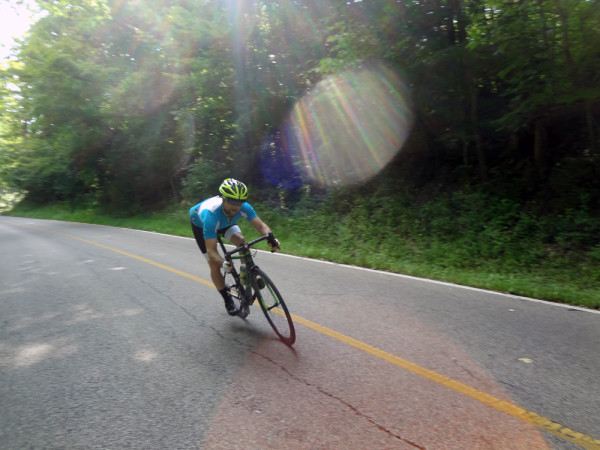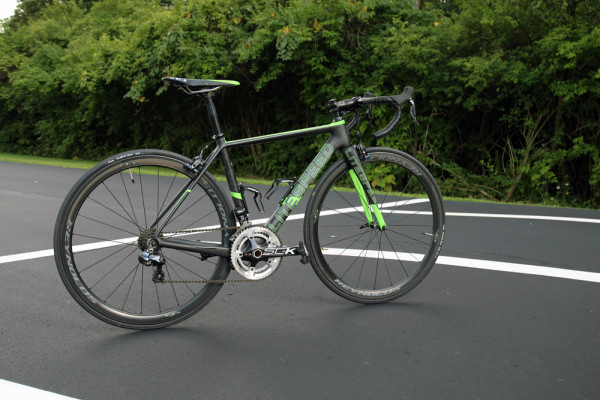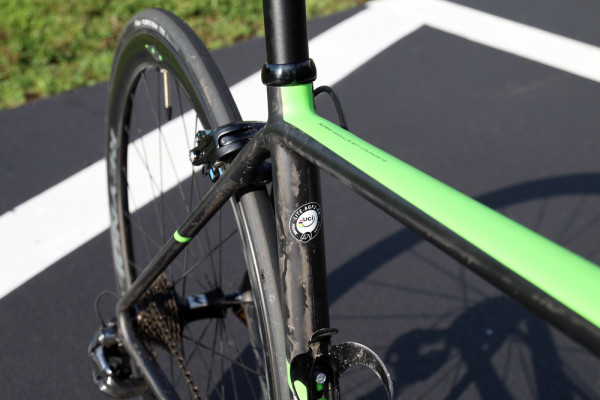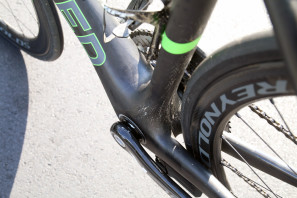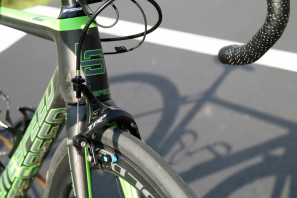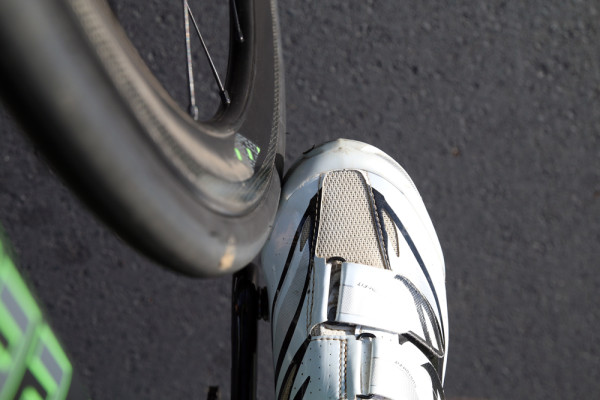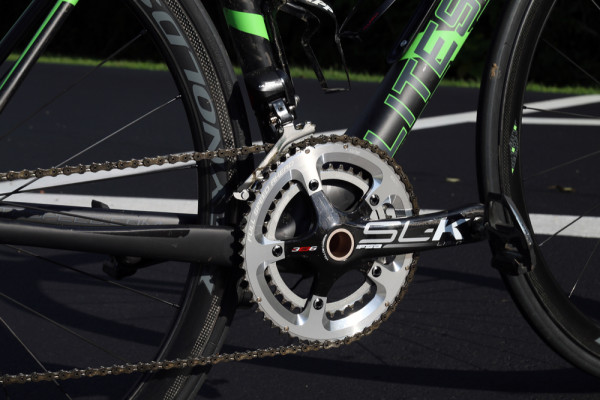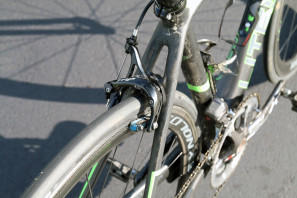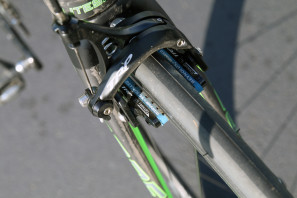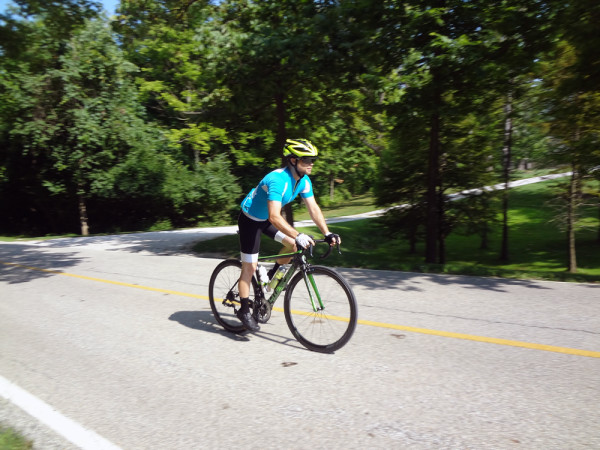It’s been nearly 12 years since Litespeed started working with carbon fiber, and even though the brand is currently selling more carbon frames than titanium domestically, they still seem to be known as the Ti company. Since the beginning, Litespeed has always set out to make the best bike possible no matter the material. With titanium, the challenge was to take aerospace grade ti tubing and to turn it into bike specific tubesets to create high end bikes. Eventually, the cold worked shaped tubes became Litespeed’s calling card and the company still sells more titanium bikes than carbon internationally.
Looking for the next evolution in design, in 2002 Litespeed started experimenting with carbon fiber seatstays for the Sienna and the Ultimate. This would eventually lead to their first full carbon model, the C-Series aero road bike. Successful tweaking over the years led to a highly manipulated aero road bike, so the next logical step was what Litespeed refers to as a good “all-rounder.”
Right around that point Litespeed’s current CEO Peter Hurley stepped into the leadership role, and helped to improve the development process in a way that allowed product designer Brad DeVaney to create the bike he envisioned – the L Series.
We’ve been on the Litespeed Li2 for quite a few miles now, get our take on the bike after the break…
When asked what about the L Series design sets the bike apart, Brad noted he took a “zone” approach. Working on very specific zones of the bike, it was designed so that the cross sections all worked well alone but at the same time also work extremely well together to make a very aerodynamic , stiff, smooth riding bike. Brad calls himself a very asymmetrical thinker which probably has something to do with the company using asymmetrical seatstays on bikes all the way back in the late 90s.That pattern of asymmetry continues in the L series, hidden about the frame.
Even with attention paid to the aerodynamic details, the frame retains UCI compliance.
Designed with a stout tapered head tube and oversized bottom bracket, the L series is built for power transfer as much as it is ride quality. As one of the early adopters of BB386, the L series uses the 86mm wide bottom bracket with a 30mm spindle FSA crank due to the super wide bearing stance. While Brad likes the idea of a wider bottom bracket, he doesn’t like the idea of offset bearings so BB386 seems like way to go.
As a carryover model from the previous year, the biggest change to the current L Series lies in the carbon plies. Litespeed has added a bit more material for added durability and performance even though it added a few grams. Brad points out that the bikes are already too light for UCI competition and they would rather run the best and lightest components while not having to add weight. Having tested frames well under 700g, the production frames are hardly portly at about 920g for the standard L series, and around 800g for the L1R. Comparatively the L series uses mainly 30t carbon (Brad’s favorite) while the L1R adds in 60t in strategic areas for added stiffness and lighter weight. When the frames are put on the test rigs, Litespeed is to the point where the carbon frames are outlasting their titanium siblings in torture testing.
Just where are the L series frames made? Litespeed doesn’t hide the fact that their carbon frames are made overseas in two different carbon factories. The company owns all of their designs and works directly with the factory to ensure the quality of their RPM or Reactive Pressure Molding carbon method.
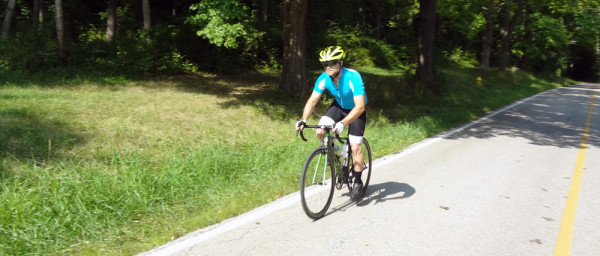
Our Take:
After putting in quite a few miles on the Li2, the All-Rounder tag seems like a good fit as long as you’re referring to all types of racing. Thanks to the aggressive geometry, the bike feels like a total go-kart in the handling department.
Much of this probably due to the fact that I’m used to riding small frames, and since small frames would usually have toe overlap with aggressive geometry many companies alter the angles to eliminate it thereby muting the geometry. Litespeed keeps the aggressive geometry true to the smaller sizes which means it has some pretty major toe overlap. Because of this, the frame is great for experienced riders and racers but maybe not so much for beginners. Note that this really only applies to the smaller frames since longer toptubes generally eliminate the severity of toe overlap. Also, it’s pretty easy to live with a bike with a lot of overlap, you just need to avoid pedaling while making tight turns – or going all Sagan and turning the bars while pulling a wheelie…
Regarding the sizing, using top tube and stack and reach numbers I was left somewhere in the middle between the small and the medium. If I had to do it again, I would probably go up a size as the S feels smaller than the numbers would imply.
Component wise, the Li2 is an interesting mix of parts designed to offer the biggest bang for the buck. The Reynolds Assault carbon clincher wheelset is hard to miss as is the [mostly] Shimano Ultegra Di2 drivetrain. Instead of Ultegra brakes you will find TRP R870 stoppers which were more about lighter weight than price for Litespeed. Fitted with Reynold’s Cryo blue pads, the TRP brakes stopped the Reynolds wheels admirably, though not quite as crisp as a pair of Shimano brakes. Speaking just to the carbon braking performance of the rims and pads, the Reynolds kit is some of the best I’ve used – though still a bit scary in the wet.
While the shifting on the FSA SL-K BB386 crank was excellent, I’m not so sure about the use of an FSA chain. Compared to Shimano chains on Shimano cassettes, the FSA chain shifts all right, but it makes quite a bit more noise in certain gears. The Easton EA70 cockpit parts, while fairly basic offer a full build devoid of house brand components and are still cheap enough to easily replace if you need a different size.
Due to the quick handling and impressive ride quality (even with the big seatpost), the Li2 does indeed seem like a great option for an all-around race bike that would be perfect for the local crit or stage race. Don’t mistake the L series for bike to cruise over to the local coffee shop, but if you’re looking for speed the $6,000 Li2 is basically race-ready, right out of the box.
For more details plus actual weight, check out the initial post on the Li2.
